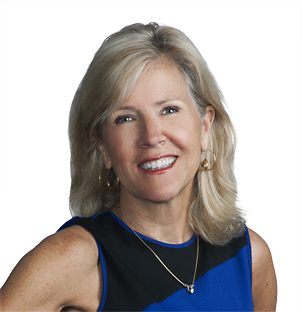The Spotlight on Flex showcases professionals from member organizations who exemplify personal and professional success while working a flexible schedule. Their stories illustrate the long-term benefits that flexible schedules offer to both individuals and organizations.
This month, we are pleased to share insights from Charise Naifeh, Associate in the Washington, DC office of White & Case LLP.
 Diversity & Flexibility Alliance: How have you made flexibility a priority and a success with your career? How has flexibility made your career more sustainable?
Diversity & Flexibility Alliance: How have you made flexibility a priority and a success with your career? How has flexibility made your career more sustainable?
Charise Naifeh: I’m a seventh year associate in the Competition Group in the DC Office of White & Case, and I started with the firm as summer associate. As an associate, there are three key factors to making my schedule work: flexibility, communication, and a supportive team.
I started on a flex schedule after my maternity leave and on-ramped back. I was at 60 percent, three days a week for the first two months, and then I went to 70 percent, four days a week and telecommuted on Fridays (this my current schedule). The firm gives us wide latitude to draft our own proposals for its review and approval; I proposed this schedule, and it made my return to work less overwhelming and much easier.

 Diversity & Flexibility Alliance: How has working flexibly made your career more sustainable?
Diversity & Flexibility Alliance: How has working flexibly made your career more sustainable? Diversity & Flexibility Alliance: How have you made work-life control a priority and a success with your schedule? How have clients contributed to this?
Diversity & Flexibility Alliance: How have you made work-life control a priority and a success with your schedule? How have clients contributed to this? This month, we are pleased to share insights from
This month, we are pleased to share insights from  This month, we are pleased to share insights from
This month, we are pleased to share insights from  Diversity & Flexibility Alliance: How have you made work-life control a priority and a success with your schedule?
Diversity & Flexibility Alliance: How have you made work-life control a priority and a success with your schedule? Diversity & Flexibility Alliance: How have you made work-life control a priority and a success with your schedule? How have clients contributed to this?
Diversity & Flexibility Alliance: How have you made work-life control a priority and a success with your schedule? How have clients contributed to this? Diversity & Flexibility Alliance: How have you made work-life control a priority and a success with your schedule? How has a client contributed to this?
Diversity & Flexibility Alliance: How have you made work-life control a priority and a success with your schedule? How has a client contributed to this? Diversity & Flexibility Alliance: How have you made work-life control a priority and a success with your schedule? How have clients contributed to this?
Diversity & Flexibility Alliance: How have you made work-life control a priority and a success with your schedule? How have clients contributed to this? Diversity & Flexibility Alliance: How have you made work-life control a priority and a success with your schedule? How have clients contributed to this?
Diversity & Flexibility Alliance: How have you made work-life control a priority and a success with your schedule? How have clients contributed to this?